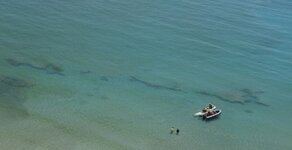Caribbeanson
Forum Supporter
- Joined
- Sep 17, 2012
- Messages
- 1,056
Not really... but thought the beach replenishment shots were pretty interesting  I know it's been filled a few times over and probably mostly canslaw from the inlet but the parts where the excavator digs out before they refill the area with inlet sand would be tempting
I know it's been filled a few times over and probably mostly canslaw from the inlet but the parts where the excavator digs out before they refill the area with inlet sand would be tempting 



 I know it's been filled a few times over and probably mostly canslaw from the inlet but the parts where the excavator digs out before they refill the area with inlet sand would be tempting
I know it's been filled a few times over and probably mostly canslaw from the inlet but the parts where the excavator digs out before they refill the area with inlet sand would be tempting 






